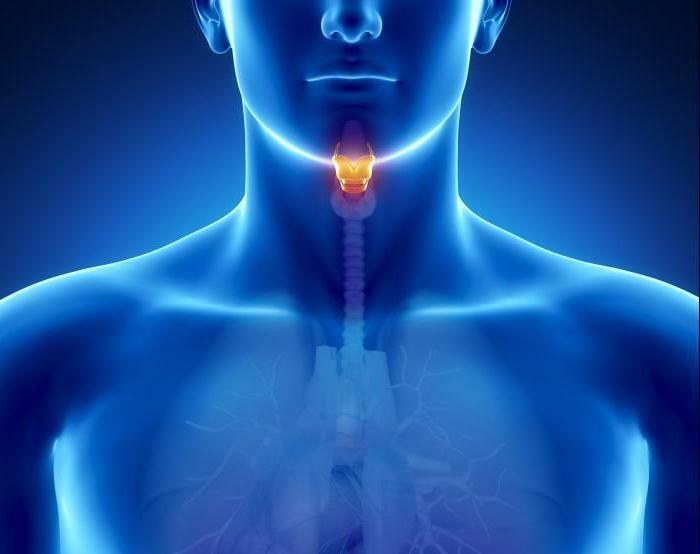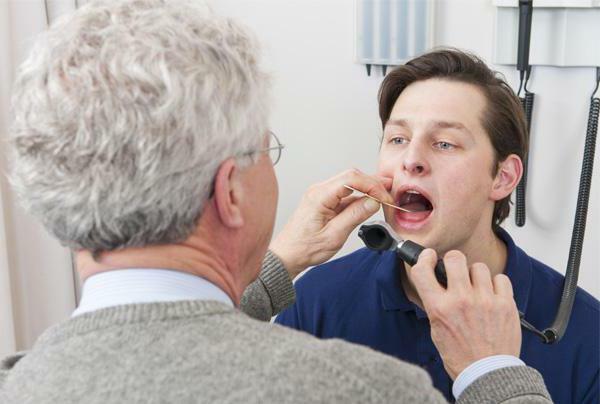Dysphonia: causes, symptoms, treatment. Functional dysphonia: treatment. Dysphonia is. ..
Dysphonia is what? The definition of this term will be given in the materials of the article in question. Also, we will talk about the causes of this pathological process, present its symptoms and ways of treatment.

Basics
Dysphonia is what? This medical term denotes a qualitative violation of the voice, which is characterized by hoarseness, nasal congestion and hoarseness. If there is a complete loss of voice, then this state is called aphonia.
Features and forms of pathology
As mentioned above, dysphonia is a voice change that occurs due to the disturbed operation of the vocal apparatus. Such a pathological process can be observed not only in an adult, but also in a child. By the way, there are a lot of reasons for its development. We will talk about them later.
According to experts, the condition in question has 2 different forms. Let's consider their features right now.
Functional dysphonia
This condition is characterized by the absence of any major pathological changes, as well as inflammation in the larynx. In this regard, functional dysphonia, the treatment of which will be described below, is not a very long process. By the way, the development of this state can contribute to various neurotic states.
There are several types of functional dysphonia. These include the following:
- Hypotone - characterized by a decrease in the muscle tone of the vocal folds, as well as the appearance of rapid fatigue and hoarseness of the voice.
- Hypertensive - characterized by increased muscle tone of the vocal folds, as well as hoarseness of the voice and sore throat.
- Mutational - is manifested mainly in boys during puberty. For this type of dysphonia, voice instability is characteristic, as well as a sharp transition from high to low.

Organic dysphonia
This is a pathology that is manifested due to the inflammatory process in the larynx( due to laryngitis, laryngotracheitis).After the extinction of inflammation, the dysphonia disappears. This kind of change of voice is sometimes called short-term.
Causes of dysphonia
The cause of the development of such a pathological condition in children is the congenital defect of the larynx, consisting in the incorrect development of cartilages of the larynx, including the epiglottis. Such an anomaly leads to prolapse of the latter, as well as incomplete opening of the entrance to the larynx. This state is manifested by a jerky and rather noisy inspiration. In medical practice, this phenomenon is called laryngomylation, or congenital stridor.
In addition to congenital cartilage defects, experts also identify vascular anomalies of the larynx, that is, the formation of angiomas, or so-called vascular tumors. They arise because of a violation of the development of lymphatic and blood vessels in the embryonic period.

Causes of dysphonia may be associated with underdevelopment or total absence of vocal folds. With their congenital dysfunction, the babies show symptoms that are very similar to those of bronchial asthma, such as bouts of dyspnoea, wheezing and stridor.
It should be noted that the cause of the development of organic dysphonia is often chronic or acute pathology of allergic, inflammatory, cancer or neurological in various parts of the larynx or lower respiratory tract.
The main causes of functional dysphonia
Why does functional dysphonia occur? Such a state can be triggered by the following factors:
- stress states;
- obstruction, or so-called impairment of the lumen of the upper respiratory tract( due to ingress of foreign bodies into them);
- diseases of the lungs, heart, endocrine system and blood vessels;
- disrupted work of the gonads, thyroid or adrenal glands;
- use of anabolic( hormone-like steroid substances);
- anemia, hypo- and beriberi;

- profession associated with the constant use of voice( teaching, vocal);
- of the cervical spine( osteoporosis, arthrosis and others);
- surgical intervention in the neck( that is, if the voice of the larynx is damaged);
- mental and neurological disorders;
- drug treatment( changing the voice under the influence of any drugs);
- consequences of infectious diseases( slow recovery or irreversible changes in the laryngeal mucosa after an acute infectious process).
Symptoms of
Symptoms of dysphonia are associated with a qualitative violation of the voice. In the development of such a disease, the person appears hoarseness. Also, his timbre or tonality changes markedly.
As for children, this condition is often accompanied by a stridor, that is, a loud and coarse sound that occurs when inhaling and exhaling due to the passage of air through the lumen( narrowed) of the larynx.
Diagnosis of the disease
Treat dysphonia only after consulting a doctor. To diagnose this pathological condition, specialists must first of all interrogate and examine the patient. In the course of this they pile out:
- the nature of the disorder( sore throat, hoarseness, voice weakness, rapid fatigue, etc.);
- duration of pathological process;
- concomitant acute and chronic diseases, which caused a partial loss of voice( for example, inflammation of the oropharynx bacterial or viral nature);
- factors that affect the development of dysphonia( reading out loud, singing, lowering or raising the timbre of the voice, etc.).

Other methods of examination
A physical examination of the patient with development of dysphonia includes the following:
- Study( acoustic) of the voice under load. For this, the patient is asked to read an article, during which time the amplitude and frequency of his voice are measured.
- Laryngoscopy is a visual examination of the larynx. This method is the most important and objective. There are several types of laryngoscopy( indirect, direct and microlaringoscopy).They allow you to assess the functionality of the vocal folds, as well as the condition of the mucous membranes of the larynx.
- X-ray and computed tomography of the larynx.
- Densitometry is the evaluation of bone density in the cervical spine. Such examination is necessary for the detection of osteoporosis or arthrosis.
It should also be noted that in view of the many different causes of dysphonia, the patient needs a consultation of a number of specialists, including a surgeon, speech therapist, endocrinologist, therapist, phoniatrist and otolaryngologist.
Laboratory diagnostics
For the detection of the inflammatory process in the patient's larynx, the patient can be sent to:
- a general blood and urine test( to exclude inflammation, as well as the evaluation of the level of elements and hemoglobin in the blood);
- biochemical blood test( for assessing the level of hormones of the parathyroid and thyroid glands, adrenals, and macro- and microelements).

Dysphonia: treatment of
How should I treat the disease? The approach to dysphonia therapy should be comprehensive. An impact on etiopathogenetic factors is required. In other words, it is necessary to treat not only general diseases and somatomorfnye disorders, but also foci of chronic infection.
The purpose of therapy of this condition is to increase the endurance of the vocal apparatus, as well as the formation of skills of stable phonation.
Most often, non-drug methods are used to treat functional dysphonia. These include phonopaedy, articulatory and respiratory gymnastics. Also actively apply massage of the collar zone, psycho-, acupuncture and physiotherapy.
As physiotherapeutic procedures for hypotonic dysphonia, the patient is assigned electrostimulation of the larynx muscles through diadynamic currents, as well as electrophoresis and amplipulse.
As for mutational dysphonia, it does not require special treatment, except for the therapy of concomitant diseases, phonopedy and rational psychotherapy.
It should also be noted that in such a pathological process, patients are often prescribed and various medications. In hypotonic dysphonia, doctors recommend the use of stimulants such as roots and rhizomes of Eleutherococcus prickly, vitamin B, and neostigmine methyl sulfate. Such drugs improve the microcirculation of the vocal folds and return a normal voice.
In case of false-lining phonation and hypo-hypertonic dysphonia, the patient is treated with a local and general anti-inflammatory treatment for hypertrophic laryngitis.
As for the treatment of spastic dysphonia, it is carried out together with neurologists. To do this, use GABA-ergic drugs, massage the neck muscles, blockade the muscles of the larynx and phonophoresis.

Operative intervention
With stable and pronounced hypotonic dysphonia, the patient is shown tiroplasty and implantation surgery. Their goal is to strengthen the adduction of vocal folds. When observing a false-lining phonation, which is accompanied by hypertrophy of the vestibular folds, surgical treatment consists in removing these pathological sites.
In the postoperative period, in addition to anti-inflammatory treatment, stimulating therapy and phonopyroid are carried out, which are aimed at increasing the tone of the vocal folds.
Summing up
To restore a normal voice, some people need to continue the phonopedia for several months. If dysphonia occurs in persons with voice speech professions, then they need long-term follow-up with a constant correction of the voice load.
Also, the patient should be reminded that changing the voice is a clear sign of a disease of the vocal apparatus. This requires an immediate reference to the otorhinolaryngologist. Failure to comply with all prescriptions of the doctor may lead to the formation of pathology of the larynx.
